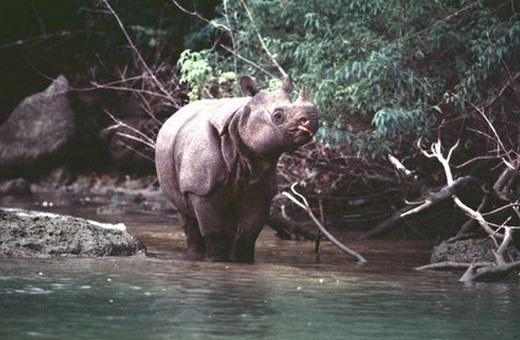Did you know the collective noun for a group of rhinos is a crash (TheAlmightyGuru-Animal Groups)? Rhinos are recognisable by their massive bodies, stumpy legs and one or two dermal horns, made out of keratin (the same stuff as your hair and nails) (WWF rhino).
There are five extant species of rhino:
1. The White Rhino (Ceratotherium simum) which has two sub species: the Southern White Rhino and the Northern White Rhino
2. The Black Rhino (Diceros bicornis) (split into four sub species)
3. Greater One Horned (Rhinoceros unicornis)
4. The Javan Rhinoceros (Rhinoceros sondaicus)
5. The Sumatran Rhinoceros (Dicerorhinus sumatrensis) (WWF rhino).
 |
| From wikicommons |
There are moves to change this attitude, see this video with the Duke of Cambridge, David Beckham and Yao Ming. A sad update to the info in this video - there are now only 4 Northern White rhino left, not 7 (WWF rhino).
At the ZSL Rhino Poaching Crisis conference, multiple angles were discussed as to what can be done to save these modern megafauna. One speaker took the attitude that low tech approaches with better paid and provisioned rangers was the way forward (some work in appalling conditions - how can they be expected to risk their lives each day when they aren't even provided with beds at night or basic washing facilities? Unhappy rangers is surely a recipe for disaster).
She also cautioned that the small pockets of rhinos would be lost, and it was vital to concentrate on the stronghold populations.
Others talked about the veterinary interventions that in a very small number of cases (i.e., 1 or 2) had managed to save a rhino that was found just after it had been attacked. You can see the video of an individual that's just been found after an attack here - however, please be warned it is graphic, horrifying and deeply saddening. It's linked rather than included in this post so you can choose whether to see or not.
More economically-minded approaches were also discussed by Jonathan Baillie (Head of ZSL conservation operations), centering on an impact bond that is only paid to the groups doing the conserving when they meet result based targets. And while I have to admit most of this section went slightly over my head, it seemed like a very people-focused way of funding rhino conservation, which is probably a more efficient way of getting a wider audience on board.
 |
| From thehulkangre.deviantart |
The rhino poaching crisis is escalating, and we risk losing the species we have today if the demand for their horn doesn't decrease. Trade in rhino horn is now a major criminal activity, with organised syndicates getting rich on the destruction. In you're interested, see a great infographic by WWF here.
The criminals will be the ones who ultimately benefit from the poaching, while the rest of us, including the consumers of this product, lose out with the disappearance of this charismatic, vital piece of wildlife and no actual medical benefit. For something a bit more fun, see this awesome rhino conservation + martial arts video by Jackie Chan, actor turned conservation advocate.



